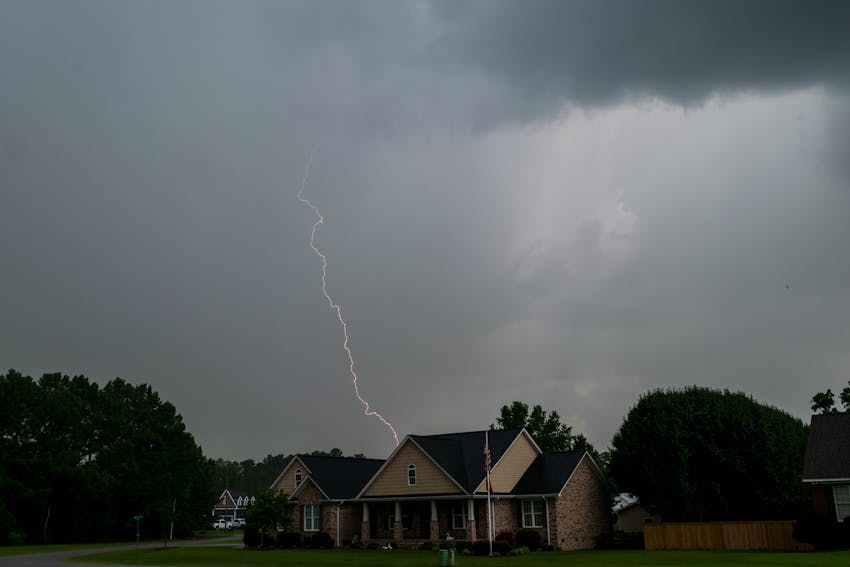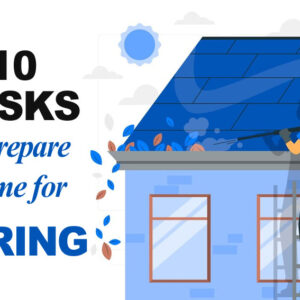Recovering from severe storm damage to your home can be a daunting and overwhelming process. This guide aims to provide a comprehensive roadmap for homeowners navigating the aftermath of a severe storm. From the initial assessment of the damage to the final steps of restoration, each phase is crucial for a successful recovery. By understanding and following these steps, homeowners can efficiently and effectively restore their homes to a safe and habitable condition.
Here are the Recovery Steps to Follow After Severe Storm Damage Hits Your Home
Step 1: Assessing the Extent of Damage:
The first critical step in the recovery process is a thorough assessment of the damage inflicted by the storm. Begin by ensuring the safety of yourself and your family. Once it’s safe to do so, inspect the exterior and interior of your home for visible damage like wall, roof damage, etc. Document the extent of the destruction, taking photographs to provide evidence for insurance claims. Pay close attention to structural damage, roof integrity, and potential hazards like fallen power lines. This initial assessment sets the foundation for a comprehensive recovery plan and aids in communicating the extent of the damage to insurance adjusters and restoration professionals.
Step 2: Contacting Your Insurance Provider:
Swift communication with your insurance provider is paramount after assessing the damage. Get in touch promptly to kick-start the claims process. Provide detailed information about the extent of the damage and the documented evidence gathered during the assessment. Be prepared to answer questions about the cause of the damage and inquire about specific procedures and timelines for claim processing. Understanding your insurance coverage, including deductibles and limits, is crucial during this stage. Keep a record of all communication with your insurance provider to ensure a smooth and transparent claims process.
Step 3: Temporary Repairs for Safety:
While waiting for insurance claims to be processed, focus on making temporary repairs to ensure the safety and security of your home. Tarping damaged roofs, boarding up broken windows, and securing entry points can prevent further damage from the elements and potential intruders. Address immediate safety concerns such as exposed electrical wiring or unstable structures. Temporary repairs serve as a protective measure, minimizing the risk of additional damage and facilitating the overall recovery process. However, it’s essential to document these temporary repairs for insurance purposes and provide receipts for any expenses incurred.
Step 4: Selecting Reputable Restoration Professionals:
When facing the aftermath of severe storm damage to your home, selecting reputable restoration professionals is paramount for a swift and effective recovery. Begin by researching local experts who specialize in comprehensive storm damage restoration. Reviews and testimonials from previous clients can provide valuable insights into the credibility and reliability of a restoration service. To ensure the highest quality of work, verify that the professionals are licensed, insured, and possess relevant certifications in the field. If you are in Austin, roof repair can be a critical aspect of post-storm restoration. Engaging with certified professionals with a proven track record ensures that your home receives the attention and expertise needed for a seamless recovery process.
Step 5: Documenting and Cataloging Losses:
Throughout the recovery process, meticulous documentation of losses is crucial for both insurance purposes and personal records. Create a detailed inventory of damaged or destroyed items, including their approximate value and purchase date. Keep receipts, invoices, and photographs to substantiate your claims. This comprehensive documentation not only expedites the insurance claims process but also provides a clear picture of the financial impact of the storm on your home and belongings. Keep a meticulous file with all essential documents, aiding seamless communication with insurance adjusters and ensuring you stay on top of the recovery process.
Step 6: Restoration and Rebuilding:
Once insurance claims are processed and the necessary approvals are obtained, the restoration and rebuilding phase can commence. Work closely with the chosen restoration professionals to execute the agreed-upon plan. Prioritize structural repairs, addressing any compromised foundations, roofs, or walls. Follow this with interior repairs, focusing on essential systems like plumbing, electrical, and HVAC. As the restoration progresses, consider implementing resilience measures to fortify your home against future storms. Engage with the restoration team regularly to stay informed about the project’s status and address any unforeseen challenges promptly.
Conclusion
Recovering from severe storm damage demands a strategic and systematic approach, from the initial assessment to the final stages of restoration. Understanding the importance of assessing damage, prompt communication with insurance providers, temporary safety repairs, selecting reputable restoration professionals, and documenting losses are all integral steps in the recovery journey. The ultimate goal is to rebuild not just a physical structure but also the sense of security and comfort that a home provides. By navigating each phase with diligence and resilience, homeowners can emerge from the aftermath of a severe storm with a restored home and a renewed sense of stability.




